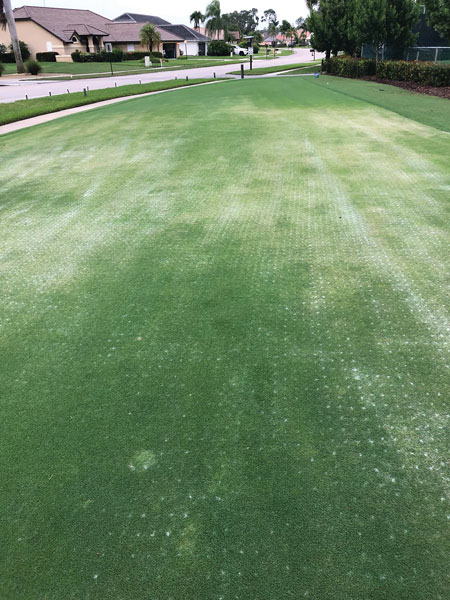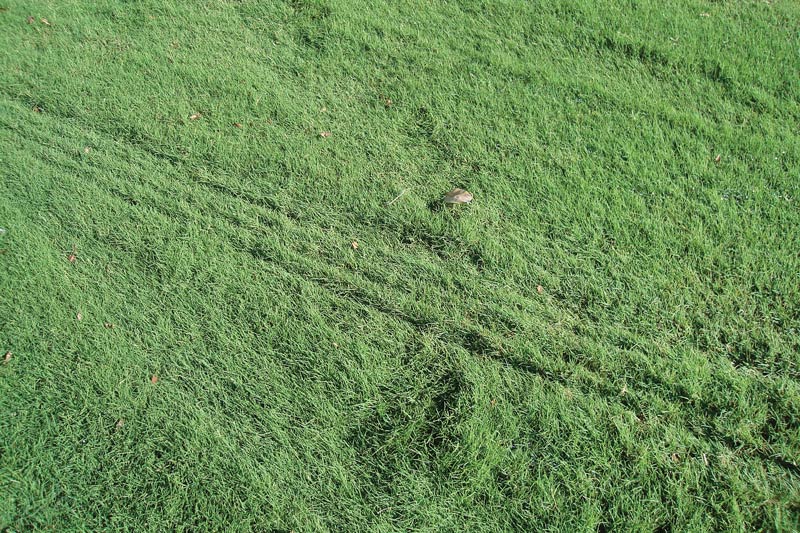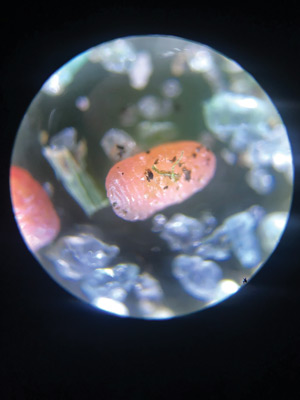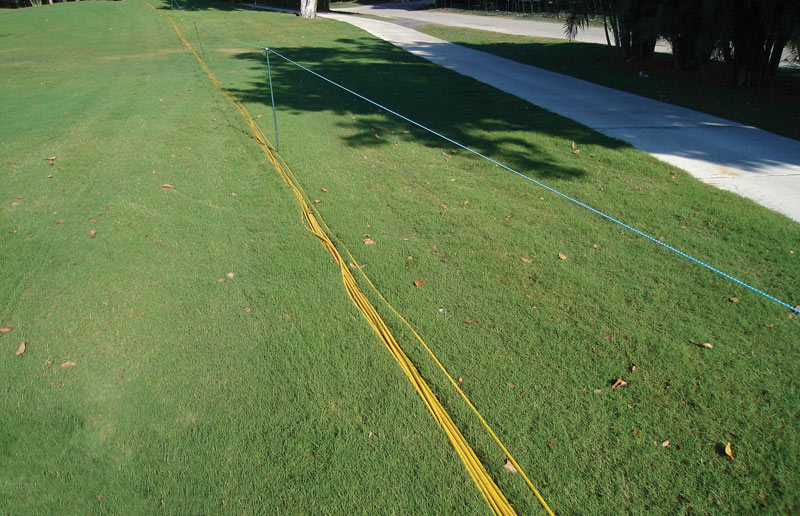GCM’s Photo Quiz is presented in partnership with STEC Equipment.

Problem A: Thin areas devoid of grass, white coating in some thatch


Location: South Florida
Turfgrass area: Putting green
Turfgrass variety: Champion and TifEagle bermudagrass
Problem B: Depressions in tall turf

Location: Southern United States
Turfgrass area: Out-of-play area
Turfgrass variety: 419 bermudagrass
Scroll down for answers.
Problem A: Thin areas devoid of grass, white coating in some thatch

Thin, chlorotic areas began to appear shortly after aerification in June at several golf courses in this part of Florida, and the superintendents were stumped. Samples were submitted to the state university for analysis, and the results came back positive for Tuttle mealybugs.
These pests are difficult to see because they’re small (less than 2 millimeters) and pink, and because they hide between the grass blade and the stem. They secrete a white, waxy substance in thatch that protects them from the elements, and these secretions can be used to help diagnose their presence. Tuttle mealybugs have rarely been collected in Florida and almost never on bermudagrass. Mealybugs suck sap from turfgrass plants, causing discoloration and wilting.
Editor’s note: The Rhodesgrass mealybug is an emerging pest of both cool- and warm-season greens. Entomologists detail its life cycle, cultural and biological controls, and findings from recent insecticide experiments in Rhodesgrass mealybug in turf.
Once the issue had been properly diagnosed, a neonicotinoid systemic insecticide was applied and followed up by another class of systemic insecticide with good results. Some cultural practices, such as verticutting, are also showing promise for better pest control if pests are spotted early.
Photo submitted by Todd Lowe, technical service manager at Bayer and a 24-year GCSAA member.
Problem B: Depressions in tall turf
The depressions in this tall bermudagrass rough should be easily identifiable for anyone who has hosted a televised golf tournament. As tournament preparations dictate, fairways are often narrowed, and rough areas are encouraged to grow long, presenting challenging areas for professional golfers.

These depressions were caused by the multitude of TV cables that traversed the course during a tournament. Although not damaging to the turf, as the cables are just laid over it, it does make for an interesting photo. Usually, the worst damage occurs from the large number of vehicles that set up grandstands, tents and other amenities that come with televised tournaments. Foot traffic from spectators is also a significant source of wear and tear on tournament courses.
Photo from John Mascaro’s collection.
Editor’s note: Have a photo of an on-course anomaly? GCM would love to have a look! Email it to Photo Quiz author John Mascaro.
John Mascaro is the president of Turf-Tec International.